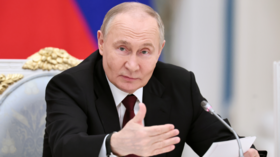Chrysanthemum diplomacy: Japanese emperor returns to India
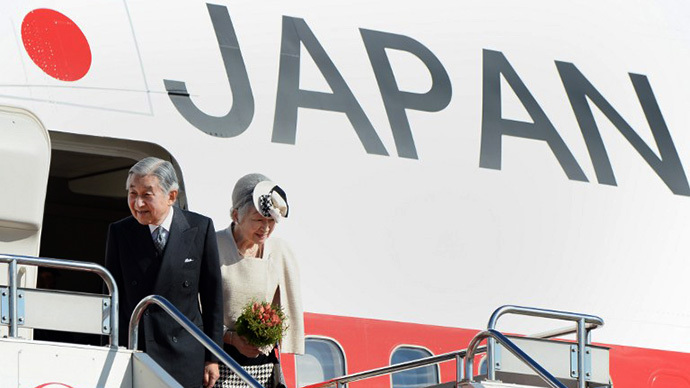
Fifty-three years is a long interlude during which national psyches, power configurations and foreign policies can alter completely.
The arrival of the emperor of Japan, Akihito, and his wife,
Empress Michiko, in India fifty-three years after they first
visited as crown prince and princess may be laced with nostalgia
and trips down memory lane, but this six-day Japanese royal trip
is taking place in a totally transformed world.
The India of today is a far cry from the India of Prime Minister
Jawaharlal Nehru, who was personally present at Delhi airport in
1960 when newly-wed Akihito and Michiko stepped down the ladder.
This time too, Indian Prime Minister Manmohan Singh, came to the
Air Force Station in Delhi to receive the monarch as a special
gesture, breaking official protocol. But as Akihito and Michiko
already know and will be repeatedly reminded on this tour,
contemporary India is a bigger international player than it was
in the Nehru era.
Changed India, half a century later
Notwithstanding the warmth and hospitality accorded to the
youthful Japanese royal couple by Nehru and the highest
representatives of the Indian government in 1960, the fact that
Japan was an anti-communist treaty ally of the United States
limited how far a non-aligned nation like India could cooperate
with it. In the five decades since then, Japan still remains the
major pillar in the network of American alliances in the Asia
Pacific. With nearly 40,000 American troops on its soil and
wide-ranging military and security cooperation with Washington,
Tokyo is to this day the heartbeat of American interests in Asia.
But India has changed almost unrecognizably, especially since the
turn of the millennium. Japan’s centrality to western
geopolitical strategies in Asia is no longer a deterrent to
building a true “strategic partnership” between New Delhi and
Tokyo.
Currently, India acknowledges some twenty-odd nations as
“strategic partners” (including Russia, China, Vietnam, Iran,
South Korea, Australia and the US). Of these, some are
potentially even strategic rivals, leading to all-round confusion
about the loose application and usage of the term ‘strategic’.
But Japan has been climbing to the very top of the list of these
strategic partners at a rapid pace.
An advanced friendship
Emperor Akihito and Empress Michiko’s arrival in India at this
juncture in Asian geopolitics sends an unmistakable signal from
the Japanese government that India is now vital to Tokyo’s grand
strategy in Asia.
The royal couple decided to come to India on the express prodding
of the cabinet of the self-professed ‘Indophile’ Prime Minister
Shinzo Abe. With invitations from nearly fifty countries pending,
the reason the emperor chose India was clearly to further Prime
Minister Abe’s wish to deepen the strategic partnership with
India to almost spiritual levels.
By virtue of the emperor’s symbolic leadership of the Shinto
religious faith in Japan and his status as a nominal head of
state, he is said to represent the Japanese people more than the
government. The Japanese embassy in Delhi emphasized to Indo
Asian News Service that “the emperor represents the people, and
the visit is to forge people-to-people ties between our two
countries.”
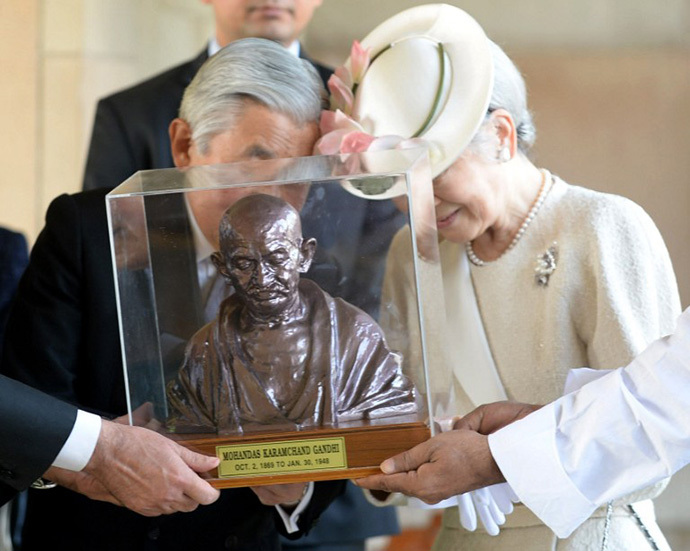
Despite His Majesty hauling along a large delegation, including a
former Japanese Prime Minister, both countries have stressed the
formal and ceremonial nature of the monarchical visit. No
diplomatic agreements or political communiqués would emanate from
this trip.
Yet, much can be inferred about the timing of the emperor’s
longish sojourn in India. New Delhi had invited the monarch a
decade ago, but it took a prime minister like Abe, who is bullish
about strategic convergence between Japan and India, to finally
make the visit a reality.
Abe himself is expected to be the chief guest at India’s Republic
Day celebrations in January 2014. The spiritual emperor is thus
paving the way for the temporal ruler to follow in a couple of
months and fulfill the promise of an advanced friendship between
India and Japan.
Economic duet
Economic factors are crucial to the blossoming Japan-India ties.
The level of Japanese aid and investment in India’s development
and infrastructure sectors is second to none. Emperor Akihito and
Empress Michiko have the southern Indian metropolis of Chennai on
their itinerary, in order to support the large number of Japanese
automobile, electronics and food processing corporations which
have commercial bases there.
According to the Indian newspaper, The Economic Times, as many as 360 Japanese firms with over 700 Japanese expatriates are operating in the state of Tamil Nadu alone, of which Chennai is the capital. The exponential growth in Japan-India trade (currently valued at 18.5 billion dollars per annum) is occurring due to the vast market potential that India’s consumer base with rising incomes presents to Japan’s exporters and investors.
Japan-India economic momentum is headed upwards particularly because of a shift in Japan’s foreign investment focus away from the trouble-ridden Chinese market, where political animus has periodically burnt the business prospects of Japanese companies. India remains a nightmare for foreign investors due to its regulatory and labor market conditions, but these are less problematic than the hatred that animates Chinese public opinion towards Japan and leads to targeted attacks and boycotts of Japanese assets during flare-ups in territorial disputes.

Rising wage levels in China are also making it gradually less
lucrative for Japanese conglomerates than ASEAN nations or India.
India’s finance minister, Palaniappan Chidambaram, has made an
explicit sales pitch for diverting China-exiting Japanese
investments to his country, by stating that “Japanese companies
and investors would like options other than China for a variety
of reasons, and India is as attractive, if not better, than
China.”
The economic revival that Japan is witnessing under the era of
‘Abenomics’ has aided India to manage its chronic current account
deficit and also improved prospects of Japanese investible cash
to finance India’s under-utilized manufacturing potential and
under-funded industrial corridor projects.
Components of the “strategic partnership”
One of the interesting instances of Japan’s famed “checkbook
diplomacy” is that it has lately sped into democratizing Myanmar
like a knight in shining armor. As India’s next-door neighbor,
which has long been a close ally of China, Myanmar is now warming
up to a Japanese economic influx that is not unwelcome in New
Delhi. Indian strategists get goose bumps at the specter of
Chinese economic and military inroads into South and Southeast
Asia in the context of a perceived contest for influence between
Beijing and New Delhi in these coveted sub-regions.
Japan under Prime Minister Abe is rated highly among Indian
policymaking elites because he has a clear vision of being a
regional leader who can rally the rest of Asia. While New Delhi
is wary of joining any formal “alliance” of democratic nations as
outlined by Abe, his strategic mission of forcing China to “take
responsible action in the international community” is like music
to Indian ears.
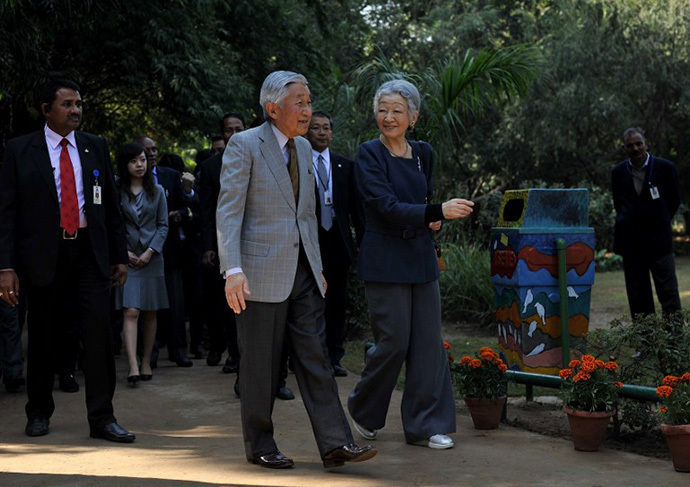
Both Japan and India have volatile territorial conflicts with China that have been simmering in light of a more assertive and confident Beijing. While global media attention has been riveted on China’s declaration of an ‘air defense identification zone” (ADIZ) in the East China Sea and its dangerous overlaps with similar zones maintained by Japan and South Korea, apprehensions have been raised in India as to whether Beijing could declare something similar like a no-fly zone along the contested land border with India, and ratchet up an already white knuckle atmosphere.
Japan’s willingness to assist India’s maritime security through
advanced amphibian aircraft supplies, and the regularization of
naval exercises between Japan and India are signs of growing
comfort levels between the two in the vast waters stretching from
the Bay of Bengal all the way to the East China Sea. While there
are intrinsic bilateral benefits of the expanding Japan-India
strategic tango, the impact of all these joint activities is
intended (more explicitly by Japan and mutedly by India) to send
a warning to China that counterbalancing is underway.
During World War II, Indian nationalists, under the charismatic
Subhas Chandra Bose, did not hesitate to seek fascist Japan’s
help with the aim of overthrowing the yoke of the British Empire.
In an eerie echo of the past, India is again eager to partner
with Japan to keep the Chinese in check.
Looking beyond China and the US
The time-tested realpolitik maxim— “my enemy’s enemy is my
friend”— has some resonance in the way India and Japan eye each
other vis-à-vis China. But India is more reticent about Prime
Minister Abe’s desire to confront China openly by organizing a
club of democracies that are ideologically distinct from and
superior to Beijing’s model of authoritarian capitalism.
In the Indian worldview of alignment with all and alliance with
none, Beijing has its own special place that cannot be
jeopardized by cozying up to Japan with any hostile intent
towards China. The volume of China-India trade is four times
greater than that between Japan and India. China and India share
common interests in promoting a multipolar world, while Japan
would presumably be happy in a US-dominated international order.
The Cold War-era phobia that India had about a Japan as an
Asiatic extension of American and Western interests is long gone,
but the basic search for a more equitable global order in which
the Americans cannot dictate terms to Indians or others in the
developing world remains entrenched in New Delhi.
India’s own great power ambitions require it to lean closer to BRICS and other emerging economies that want to reduce American shares and voices in global institutions. To be fair, Japan itself has tried on occasions to lead Asia out of the American-driven Bretton Woods economic architecture. It was ironically America’s staunch ally, Japan, which visualized an Asian alternative to the International Monetary Fund (IMF) after the latter bungled the Asian Financial Crisis in 1997.
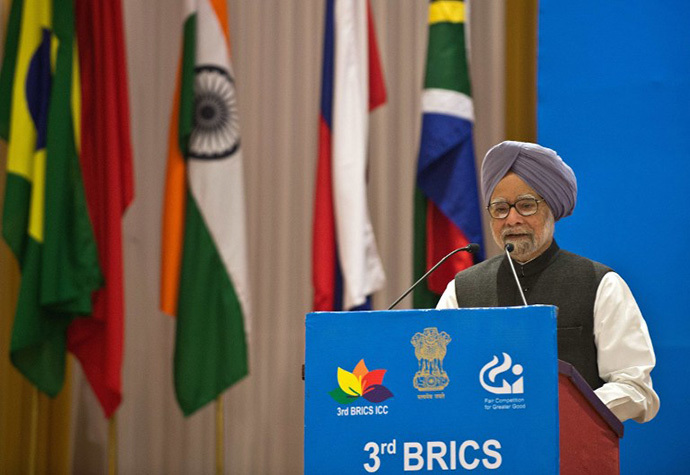
Shorn of its pre-World War II militaristic path of dominating
Asia, Japan still has a foreign policy tradition of trying to be
a convener of a regional Asian order that builds dense currency
swaps and other macroeconomic integration moves, which would
protect Asia’s growing economic potential from Western market
turmoil.
India shares such visions of a more integrated Asia and is
comfortable with the geostrategic term, ‘Indo-Pacific Asia’, a
phrase popularized by Australian strategists like Rory Medcalf.
The more Prime Minister Abe anchors Japan as an Asian leader in
its own right, and not just as a junior partner of the US, the
stronger the inclination in India would be towards twinning its
fortunes and conjoining its lenses with those of Japan.
Bridging the understanding deficit
The second visit of Emperor Akihito and Empress Michiko to India
will help rectify one area in which bilateral relations have been
lagging, viz. sociocultural understanding and exchanges. Because
of Japan’s hitherto insular and mono-ethnic national identity
construction and its non-English academic and intellectual
environment, Indian citizens and thinkers have not taken to Japan
the way they have flocked to the US. The Indian diaspora in Japan
is proportionally very minuscule and has not become a formidable
presence there.
In the long run, the demographic decline in Japan and India’s ever-eager class of numerous skilled professionals wanting to emigrate to richer countries, should overcome the deficits in people-to-people interaction. The move among Japanese universities to shift to English-based learning and research is also going to motivate more students and strategic elites from India to travel to Japan and vice versa.
Diplomacy by Japan’s Chrysanthemum throne in India can be a
showpiece voyage to pique interest among ordinary Indians about
Japan’s society, unique value systems and popular culture.
Indians nurse deep admiration for Japan as a technological
achiever, which set the modernization trend for the rest of Asia
to emulate. But the supreme symbolism of the Japanese emperor and
empress mingling with Indian people can transcend this mechanical
impression and attach a human face to the bilateral relationship.
As far more open-minded societies than in 1960, India and Japan
can rediscover each other with a royal touch.
The statements, views and opinions expressed in this column are solely those of the author and do not necessarily represent those of RT.
The statements, views and opinions expressed in this column are solely those of the author and do not necessarily represent those of RT.







